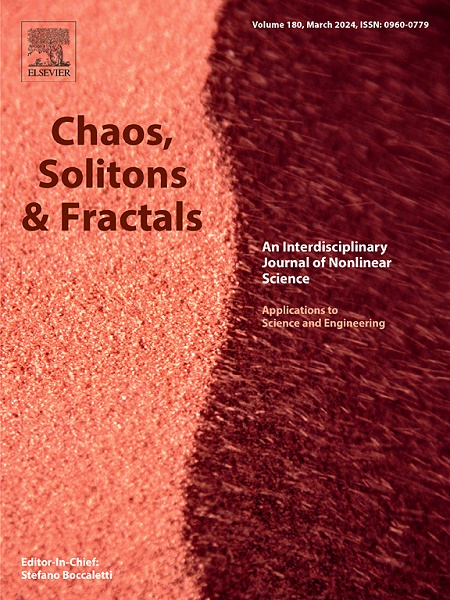Non-Markovian superposition process model for stochastically describing concentration–discharge relationship
IF 5.6
1区 数学
Q1 MATHEMATICS, INTERDISCIPLINARY APPLICATIONS
引用次数: 0
Abstract
Concentration–discharge relationship is crucial in river hydrology, as it reflects water quality dynamics across both low- and high-flow regimes. However, its mathematical description is still challenging owing to the underlying complex physics and chemistry. This study proposes an infinite-dimensional stochastic differential equation model that effectively describes the concentration–discharge relationship while staying analytically tractable, along with the computational aspects of the model. The proposed model is based on the superposition of the square-root processes (or Cox–Ingersoll–Ross processes) and its variants, through which both the long-term moments and autocovariance of river discharge and the fluctuation of water quality index can be derived in closed forms. Particularly, the model captures both long (power decay) and short (exponential decay) memories of the fluctuation in a unified manner, while quantifying the hysteresis in the concentration–discharge relationship through mutual covariances with time lags. Based on a verified numerical method, the model is computationally applied to weekly data on total nitrogen (TN. long memory with moderate fluctuation), total phosphorus (TP. short memory with large fluctuation), and total organic carbon (TOC. short memory with moderate fluctuation) from a rural catchment to validate its applicability to real-world datasets. Based on the identified model and its mutual covariance, our findings indicate that, on average, the peak concentrations of these water quality indices appear approximately 1 day after discharge. Finally, the study discusses the effects of model uncertainty on mutual covariance.
随机描述浓度-流量关系的非马尔可夫叠加过程模型
浓度-流量关系在河流水文学中是至关重要的,因为它反映了低流量和高流量状态下的水质动态。然而,由于其潜在的复杂的物理和化学,其数学描述仍然具有挑战性。本研究提出了一个无限维随机微分方程模型,该模型有效地描述了浓度-流量关系,同时保持了分析的可处理性,以及模型的计算方面。该模型基于平方根过程(或Cox-Ingersoll-Ross过程)及其变体的叠加,通过该模型可以以封闭形式导出河流流量和水质指数波动的长期矩和自协方差。特别是,该模型以统一的方式捕获了波动的长(功率衰减)和短(指数衰减)记忆,同时通过具有时间滞后的相互协方差量化了浓度-放电关系中的滞后。基于经过验证的数值方法,将该模型应用于全氮(tn)、全磷(TP)、全磷(tn)的周数据计算。记忆短,波动大),总有机碳(TOC)。短期记忆与适度波动)从农村集水区验证其适用性,以实际数据集。基于所确定的模型及其相互协方差,我们的研究结果表明,这些水质指标的峰值平均出现在排放后1天左右。最后,讨论了模型不确定性对相互协方差的影响。
本文章由计算机程序翻译,如有差异,请以英文原文为准。
求助全文
约1分钟内获得全文
求助全文
来源期刊

Chaos Solitons & Fractals
物理-数学跨学科应用
CiteScore
13.20
自引率
10.30%
发文量
1087
审稿时长
9 months
期刊介绍:
Chaos, Solitons & Fractals strives to establish itself as a premier journal in the interdisciplinary realm of Nonlinear Science, Non-equilibrium, and Complex Phenomena. It welcomes submissions covering a broad spectrum of topics within this field, including dynamics, non-equilibrium processes in physics, chemistry, and geophysics, complex matter and networks, mathematical models, computational biology, applications to quantum and mesoscopic phenomena, fluctuations and random processes, self-organization, and social phenomena.
 求助内容:
求助内容: 应助结果提醒方式:
应助结果提醒方式:


